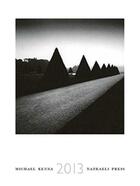-
Date de parution : 31/03/2022
-
Editeur :
Prestel
-
EAN : 9783791388267
-
Série :
(-)
-
Support :
Papier
Résumé:
A rocky coast along the Sea of Japan; an immense plain of rice fields in the snow; Mount Fuji towering over misty wooded hills; silent temples devoid of people but brimming with Buddhist deities; a Torii gate mysteriously emerging from moving clouds and water-these are a few images from this... Voir plus
A rocky coast along the Sea of Japan; an immense plain of rice fields in the snow; Mount Fuji towering over misty wooded hills; silent temples devoid of people but brimming with Buddhist deities; a Torii gate mysteriously emerging from moving clouds and water-these are a few images from this remarkable collection of photographs by Michael Kenna, whose black-and-white work is highly renowned. Forms of Japan, brilliantly designed by Yvonne Meyer-Lohr, is organized into chapters simply titled, "Sea," "Land," "Trees," "Spirit," and "Sky." The quietly evocative photographs, often paired with classic haiku poems of Basho, Buson, Issa and others, provide a contemplative portrait of a country better-known for its energy and industry. Gorgeously reproduced to convey the enormous subtleties that exist in Michael Kenna's traditional black-and-white silver prints, the photographs in this book include both well-known and previously unpublished images from all corners of Japan: Hokkaido, Honshu, Kyushu, Okinawa and Shikoku.
Donner votre avis















